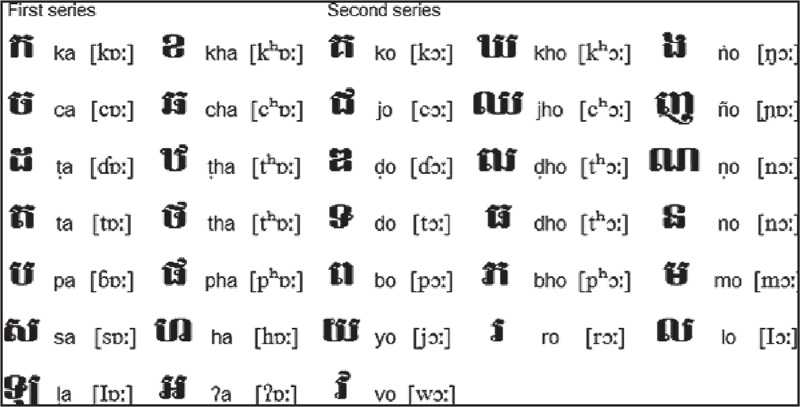Tuesday Apr 15, 2025
Tuesday Apr 15, 2025
Friday, 2 October 2020 12:00 - - {{hitsCtrl.values.hits}}

By Harsha Wijayawardhana in collaboration with LK Domain Registry
Sinhala script had derived from Brahmi script that had given rise to almost all North and South Indian scripts. In the older tradition, Brahmi has been classified into two subgroups namely Northern Brahmi and Southern Brahmi and Sinhala script, though the spoken language has its origins to North India, had derived from the Southern Brahmi tradition.
Southern Brahmi had given birth to Tamil, Kannada, Telugu, Malayalam, and these languages are categorised as Dravidian languages as opposed to Sinhala which belongs to the Indo-European family of languages. With Sinhala, all most all North Indian languages namely Hindi, Gujarati, Marathi, Bengali, etc. belong to the Indo-Aryan subgroup of the Indo European language group.
Brahmi had been used in Sri Lanka to write rock inscriptions from 3rd CBE to 2nd CE and there is carbon-dated evidence from potsherds found in ancient burial sites, some letters similar looking to Brahmi had been inscribed on pottery 800 years before the arrival of Vijaya in Sri Lanka. Tamil Brahmi inscriptions also had been found in the Anuradhapura period in parallel to Sinhala Brahmi.
Pallava Grantha and East Asian scripts
Sinhala script began evolving from Brahmi from 1 CE onwards and by the Sigiri period, Sinhala script had two new letters for vowels, Ae (ඇ) and Ae: (ඈ) which are not found in the other Indic languages. Shapes of Sinhala letters had also begun showing clear demarcation from Brahmi becoming round or circular providing evidence for Ola writing since the early first century. In the fourth century, Sinhala script was under the influence of Pallava Grantha which also influenced East Asian, scripts such as Khmer, Old Malay, and Javanese, etc. due to close connections established between these countries with the Pallava Kingdom through trading.
Subsequently, Khmer gave rise to the present Thai script. It is also speculated that Sri Lankan monks also had a hand in the development of the Thai script. It is also amazing to find that East Asian scripts have glyphs for both Ae (ඇ) and Ae: (ඈ) providing a possible clue to the connection Sinhala script had in the development of East Asian scripts after the demise of Pallava Kingdom. Figure 1 shows the Khmer script.
Unicode is not an alphabet but only an encoding
In the previous articles that had been written by me, I had introduced the main concepts of the Unicode of having every character encoded in Unicode by a unique two-byte code point. As I mentioned in my articles on Sinhala Unicode, a Unicode code point that represents a Sinhala letter can coexist with any other code points of letters of different languages in a single document when stored in Unicode.
On the contrary to popular belief, Unicode Charts are merely encodings and are not digital alphabets. In other words, the main objective of Unicode Charts is to map a character in an alphabet to a number in hexadecimal providing that character to be stored in a memory location in a digital device for subsequent retrieval and manipulations.
(Harsha Wijayawardhana B.Sc., FBCS is COO and CTO of Theekshana R & D.)
Discover Kapruka, the leading online shopping platform in Sri Lanka, where you can conveniently send Gifts and Flowers to your loved ones for any event including Valentine ’s Day. Explore a wide range of popular Shopping Categories on Kapruka, including Toys, Groceries, Electronics, Birthday Cakes, Fruits, Chocolates, Flower Bouquets, Clothing, Watches, Lingerie, Gift Sets and Jewellery. Also if you’re interested in selling with Kapruka, Partner Central by Kapruka is the best solution to start with. Moreover, through Kapruka Global Shop, you can also enjoy the convenience of purchasing products from renowned platforms like Amazon and eBay and have them delivered to Sri Lanka.
Discover Kapruka, the leading online shopping platform in Sri Lanka, where you can conveniently send Gifts and Flowers to your loved ones for any event including Valentine ’s Day. Explore a wide range of popular Shopping Categories on Kapruka, including Toys, Groceries, Electronics, Birthday Cakes, Fruits, Chocolates, Flower Bouquets, Clothing, Watches, Lingerie, Gift Sets and Jewellery. Also if you’re interested in selling with Kapruka, Partner Central by Kapruka is the best solution to start with. Moreover, through Kapruka Global Shop, you can also enjoy the convenience of purchasing products from renowned platforms like Amazon and eBay and have them delivered to Sri Lanka.